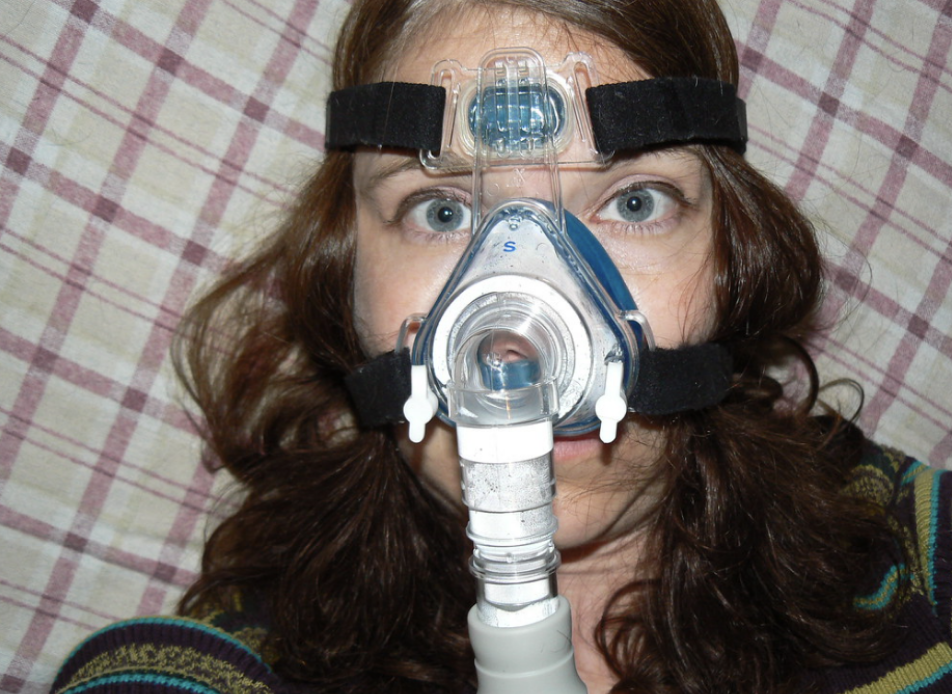

Continuous Positive Airway Pressure (CPAP) therapy has revolutionized the way we treat obstructive sleep apnea or central sleep apnea, a common sleep disorder characterized by interruptions in breathing during sleep. One of the key components of successful CPAP therapy is the mask, which delivers a continuous stream of air to keep the airways open. A CPAP machine can have different mask styles, from a gel CPAP mask to a silicone full-face mask or a nasal mask. So, there are various types of CPAP masks. The most convenient one is a nasal pillow mask, which has a mask cushion to make the mask-wearing experience comfortable for sleep apnea patients.
However, the importance of the mask size is often overlooked, and finding the right fit is crucial for the effectiveness of the therapy and the overall comfort of the user. Besides, the purpose of a CPAP device is to facilitate mouth breathing when an individual is asleep so that there are no pauses in breathing during sleep. If you are still figuring out how the mask size can influence the effectiveness of your CPAP therapy, then you are in the right place. In this guide, we will explore the significance of CPAP therapy and the role of CPAP masks.
Before delving into the importance of mask size, let's understand the significance of CPAP therapy in treating sleep apnea. Sleep apnea occurs when the muscles in the throat relax excessively during sleep, leading to partial or complete blockage of the airway. This results in snoring, choking, and, most importantly, interrupted breathing, which can happen multiple times throughout the night.
CPAP therapy addresses this issue by providing a continuous stream of pressurized air through a mask, preventing the airway from collapsing. By maintaining a consistent flow of air, CPAP therapy ensures that the user receives adequate oxygen, promoting uninterrupted sleep and reducing the risk of associated health problems such as cardiovascular issues, daytime fatigue, and cognitive impairment.
The CPAP mask is a crucial component of the therapy, serving as the interface between the device and the user. The mask's primary function is to deliver the pressurized air to the airways, keeping them open and allowing for normal breathing during sleep. However, the effectiveness of the therapy is significantly influenced by the size and fit of the mask. As a result, there are various CPAP mask types to cater to every individual's needs, as it can greatly influence the degree of effectiveness of this treatment.
The comfort of the CPAP mask plays a pivotal role in the user's compliance with the therapy. If the mask is too large or too small, it can lead to discomfort, skin irritation, and pressure sores. Users are more likely to adhere to their CPAP treatment plan if they find a mask that fits comfortably and allows them to sleep soundly throughout the night.
An improperly sized mask can result in air leaks, diminishing the effectiveness of the therapy. Air leaks not only reduce the therapeutic pressure delivered to the airways but also lead to noise disturbances, potentially disrupting the user's sleep and that of their sleep partner. Finding the right mask size is essential for minimizing air leaks and ensuring optimal therapy.
The prescribed pressure for CPAP therapy is determined by healthcare professionals based on the severity of the sleep apnea. Using a mask that doesn't fit properly can compromise the delivery of the prescribed pressure. This may result in ineffective treatment, as the airways may not remain adequately open, leading to continued sleep disruptions.
A poorly fitted mask can cause facial pressure sores, red marks, and discomfort. Over time, these issues can lead to non-compliance as users may be reluctant to continue therapy due to the physical discomfort associated with the mask. Choosing the right size helps mitigate these side effects, promoting a positive experience with CPAP therapy.
The journey to finding the perfect CPAP mask size begins with consultation and guidance from healthcare professionals. Sleep specialists and respiratory therapists can assess the user's facial structure, taking into account factors such as nose shape, facial contours, and skin sensitivities.
Everyone has unique facial features, so what works for others may not work for you. It would require a bit of trial and error to find the correct mask size for you. Many CPAP providers offer fitting sessions that will allow you to try different mask sizes to determine the most comfortable and effective option.
CPAP masks come in various types, including nasal masks, full-face masks, and nasal pillow masks, so the right size may vary depending on its type. For example, if you breathe through your mouth during sleep, you may find a full-face mask more suitable, but if you prefer a smaller profile, nasal pillows may benefit you.
It's essential for you to undergo regular reassessments of your mask size as weight loss, weight gain, and changes in facial structure can impact the fit of the mask. Healthcare providers can help you to stay proactive in ensuring that your CPAP mask continues to provide effective therapy.
In the world of CPAP therapy, you cannot neglect the importance of the mask size in order to achieve effective CPAP therapy. The correct fit is crucial for comfort, compliance, and the overall success of the treatment, offering you a restful and good night's sleep. As technology continues to evolve, manufacturers innovate and bring out something new, creating masks with improved features, making it easier for individuals to find the perfect fit for their unique needs. You can enhance the quality of your sleep by prioritizing the size and fit of the CPAP mask, thus improving your overall health, where you can experience the full benefits of continuous positive airway pressure therapy.
Leave a comment